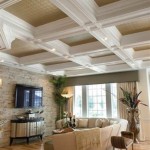How To Decorate Your Own Wedding: A Comprehensive Guide
Decorating a wedding is a significant undertaking, often perceived as an intricate task demanding meticulous planning and execution. Choosing to personally manage the wedding decorations, however, offers a unique opportunity to inject personal style and budgetary control into the celebration. This article provides a detailed exploration of the necessary steps involved in successfully decorating your own wedding, ensuring a memorable and visually appealing event.
Establishing a Clear Vision and Theme
The foundational step in any successful wedding decoration endeavor is defining a clear, consistent vision and thematic direction. This involves more than simply selecting favorite colors; it requires careful consideration of the overall atmosphere you wish to create and how the decorations will contribute to that ambience. A cohesive theme will act as a guiding principle, ensuring that all decorative elements work harmoniously together.
Begin by exploring various wedding themes and styles. Classic themes, such as romantic, rustic, or modern, provide established frameworks with readily available resources. Alternatively, personalized themes centered around shared interests, hobbies, or cultural backgrounds can create a truly unique and memorable experience. Consider the venue itself. A barn wedding naturally lends itself to a rustic or bohemian theme, while a modern art museum might be better suited to a sleek, minimalist aesthetic.
Once a theme is chosen, create a mood board. This visual aid gathers images of colors, textures, fabrics, floral arrangements, and other decorative elements that align with the chosen theme. Platforms like Pinterest and Canva are excellent tools for creating digital mood boards. Refer back to the mood board throughout the planning process to maintain focus and ensure consistency.
Color palettes are integral to establishing the desired mood. Consider the psychological impact of different colors and how they relate to the theme. Warm tones like reds and oranges can create a sense of energy and passion, while cool tones like blues and greens evoke calmness and tranquility. Neutral colors, such as white, ivory, and gray, provide a sophisticated backdrop that allows other colors to pop. When selecting a color palette, consider the time of year and the venue's existing color scheme.
Budget considerations also play a crucial role in shaping the vision. A grand ballroom might require extensive drapery and elaborate floral arrangements, while a simpler outdoor setting can be enhanced with more understated decorations. Being realistic about the budget early on will help to prioritize decorative elements and make informed decisions about where to allocate resources.
Planning and Logistics: The Foundation for Success
Once the vision is established, the focus shifts to meticulous planning and logistical arrangements. This phase is critical for ensuring smooth execution and minimizing potential problems on the wedding day. A well-organized plan is the cornerstone of a successful DIY wedding decoration project.
Begin by creating a detailed inventory of all necessary decorative items. This list should include everything from floral arrangements and table linens to lighting fixtures and signage. Categorize items by function and location within the venue (e.g., ceremony décor, reception table centerpieces, entrance decorations). Consider creating a spreadsheet to track quantities, costs, and vendors.
Develop a comprehensive timeline that outlines all key tasks and deadlines leading up to the wedding. This timeline should include tasks such as ordering supplies, creating DIY decorations, coordinating with vendors, and setting up the venue. Break down each task into smaller, manageable steps and assign specific deadlines to each. A Gantt chart can be a helpful tool for visualizing the timeline and tracking progress.
Venue logistics are paramount. Obtain a floor plan of the venue and use it to map out the placement of tables, chairs, the dance floor, and other key elements. Determine the best locations for decorative elements based on the venue's layout and the desired flow of the event. Confirm with the venue manager regarding any restrictions on decorations, such as limitations on hanging items or open flame policies.
Recruit assistance. Decorating a wedding is a significant undertaking that requires a team effort. Enlist the help of trusted friends and family members who are willing to assist with tasks such as assembling decorations, setting up the venue, and coordinating with vendors. Assign specific responsibilities to each helper and provide clear instructions to ensure everyone is on the same page.
Contingency planning is essential. Prepare for unforeseen circumstances by having backup plans for potential problems. For example, if the weather forecast predicts rain for an outdoor wedding, have an alternative indoor location secured or prepare for tented coverage. Keep extra supplies on hand in case of damage or unexpected needs.
Strategic Decoration Techniques: Maximizing Impact
The final stage involves implementing the decoration plan with strategic techniques designed to maximize visual impact while adhering to the established vision and budget. Careful execution and attention to detail are crucial for creating a cohesive and memorable atmosphere.
Prioritize focal points. Identify key areas within the venue that will draw the most attention, such as the ceremony altar, the head table, and the entrance. Focus efforts and resources on decorating these areas with impactful elements that capture the theme and create a sense of awe. For example, a dramatic floral archway at the altar can serve as a stunning backdrop for the ceremony, or a beautifully decorated head table can elevate the reception atmosphere.
Utilize lighting effectively. Lighting plays a significant role in shaping the ambience of a wedding. Consider using a combination of ambient lighting, task lighting, and accent lighting to create depth and dimension. String lights, fairy lights, and candles can add a touch of romance and warmth, while spotlights can highlight specific decorative elements. Ensure that the lighting is appropriate for the time of day and the venue's existing lighting conditions. Dimmers can be used to adjust the brightness of lighting throughout the evening.
Incorporate personal touches. Adding personalized details to the decorations can make the wedding feel more unique and meaningful. These touches can include displaying photographs of the couple, incorporating family heirlooms, or creating DIY decorations that reflect shared interests. For example, a seating chart designed around a map of places the couple has traveled to, or centerpieces featuring handmade favors, can add a personal and memorable element to the celebration.
Pay attention to details. Small details can make a big difference in the overall look and feel of the wedding. Ensure that all decorations are neatly arranged and well-maintained. Use high-quality materials whenever possible and pay attention to things like tablecloths, napkins, and chair covers. Consider adding finishing touches such as ribbons, bows, or small floral accents to enhance the aesthetic appeal of the decorations.
Consider the flow of the event. When decorating, consider how guests will move through the venue and how the decorations will enhance their experience. Create a clear path of travel and ensure that all areas are well-lit and easily accessible. Use signage to direct guests to key locations such as the ceremony site, the reception area, and restrooms. Ensure that decorations do not obstruct views or create hazards. By paying attention to the flow of the event, it will create a more comfortable and enjoyable experience for guests.
Floral arrangements are important aspects of wedding decorations. While DIY floral arrangements can be cost-effective, they require skill and time. Explore options by using a mix of real and artificial flowers, or consider focusing on greenery and foliage, which can be more affordable and easier to arrange. When choosing flowers, consider seasonality, color palette, and the overall theme of the wedding. Consult with a florist for guidance on flower selection and arrangement techniques. Alternatively, local flower farms or farmers' markets might offer affordable and unique options.
In summary, decorating your own wedding is a complex process that requires a clear vision, detailed planning, and strategic execution. By establishing a consistent theme, meticulously planning logistics, and implementing targeted decoration techniques, you can create a memorable and visually appealing celebration that reflects your personal style and stays within budget.

Ideas To Decorate Rooms For A Wedding Décor And Styling Hand Picked Hotels

30 Best Diy Wedding Decorations Decoration Ideas

9 Tips For Decorating Your Wedding Reception On A Budget

90 Wedding Reception Decoration Ideas That Are Straight Dreamy

9 Unique Decor Ideas For A Wedding At Home Designcafe

90 Wedding Reception Decoration Ideas That Are Straight Dreamy

Wedding Decoration Ideas And Inspiration Craftcuts Com

Your Own Wedding Decor Ideas You Do The Shoot

Ideas To Decorate Rooms For A Wedding Décor And Styling Hand Picked Hotels

90 Wedding Reception Decoration Ideas That Are Straight Dreamy







